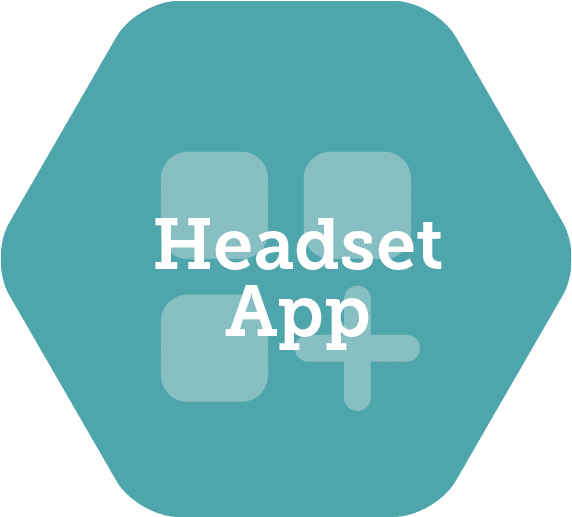Picture this: it’s your first day of work, and you’re ready to learn the skills needed for your new role. You walk into the office and head to a large room with your fellow new hires for training. You sit at a table, and an instructor begins lecturing the room on company policy, expectations, using new equipment, and more. You are constantly checking the clock to see how much longer you’ll be in this room. Eight hours later, you’re told this is day one of your training program. You sigh as you realize you have another day of sole instructor-led training tomorrow.
That doesn’t sound too exciting, does it? When it comes to employee training, learners want to feel engaged in their training program. You don’t want to look out into an audience of employees and see yawns of boredom. Engaged employees absorb and retain information at a greater rate than disengaged employees.
Employee training is never a one-size-fits-all. Different learners thrive through different learning styles, whether visual, aural, reading, or kinesthetic. Approaching learning in a single way means a large subset of learners will miss out on important information.
One way to solve these problems is through a blended learning solution.
What is a blended learning solution?
A blended learning solution is a training approach involving multiple learning modalities. It can combine in-person and digital learning in either a classroom or a virtual environment. Some examples of different learning methods include:
- Lectures
- Hands-on workshops
- Group discussions and forums
- Virtual reality
- Interactive games
- Peer-to-peer coaching
- Job shadowing
Benefits to a blended learning solution
Training environments that are highly engaging and interactive mean employees have a better chance at absorbing new information. For example, employees could have an instructor-led session in person, complete a VR scenario, debrief an activity in small groups, and then complete eLearning modules online at their own pace. Breaking up training sessions through multiple modalities is beneficial in reducing monotony and aligning with attention spans.
Blended learning also provides a more inclusive approach to learning, as various employees may prefer different learning styles. For example, for reading learners, reading books on company policy may be the best way for them to learn. On the other hand, a kinesthetic learner may need to role-play the policy in action in the virtual world to absorb the information. If employees are learning in their own learning style, they have a better chance of remembering the information presented.
Utilizing blended learning can help create efficiencies in the long run. Think about the costs associated with removing subject matter experts and instructors from the job. Employees often need full workdays put towards training which may not work around busy schedules. These resource costs can be minimized by making training more effective through training methods other than sole instructor-led training.
Including VR in your blended learning solution
At Motive, we don’t believe that virtual reality will replace every aspect of your training program. In fact, we advocate against it. Your employees will not want to be in a headset for long periods, and without pre- or post-discussions, your employees may not obtain the highest benefits from the technology.
Virtual reality can enhance existing learning content. The technology provides high interactivity and immersion, leading to higher retention rates and engagement. Through VR, trainees can put what they have learned into practice in a safe and controlled environment. The hands-on experience means skills are reinforced, with immediate feedback to track individual progress. VR also provides training teams with valuable data to analyze skills, ensuring employees are ready for work.
Planning is essential in creating your blended learning solution. You need to analyze your goals, budget, resources, and technology available. Write out the learning objectives you hope to achieve with your training program, and determine where different modalities fit best. For example, virtual reality is highly effective in high-risk, potentially dangerous situations amongst other use cases. Identify the metrics you want to track. After implementation, evaluate success based on your goals and performance improvements.
An example of incorporating VR as part of your blended learning solution may begin with the goal of teaching employees how to use a new piece of machinery. The training starts with an instructor-led explanation of the workings of the machine. The trainees then watch a short video of how to use the machine. Each employee enters the virtual world through a VR headset and is guided step-by-step in operating the machine. They can then practice without a guide to ensure the information sticks. After the session, employees can be given the opportunity to shadow an experienced employee in their role. Finally, employees break off into small groups to discuss their training experience.
Blended learning solutions provide employees with exciting methods of learning. Applying various modalities to your training program will ensure inclusive learning as everyone learns differently. A more personalized learning experience leads to greater information retention. Including VR in your blended learning solution means learners benefit significantly from an active, hands-on approach.
Latest Posts
- « Previous
- 1
- …
- 6
- 7
- 8
Stay in the Know
Want to stay up-to-date with what is going on in the world of immersive training? Subscribe to the Motive Blog.
Ready to revolutionize your training program?
We’re ready to show you how seamlessly you can create, edit and deploy VR training modules. Our team is standing by to help you revolutionize your training program.





